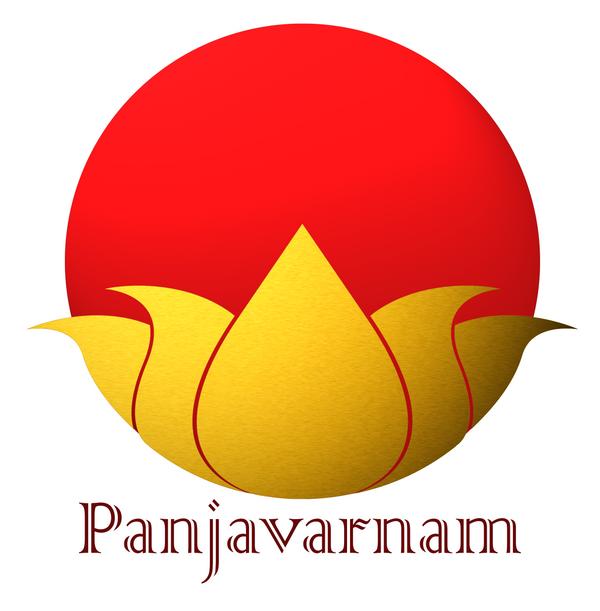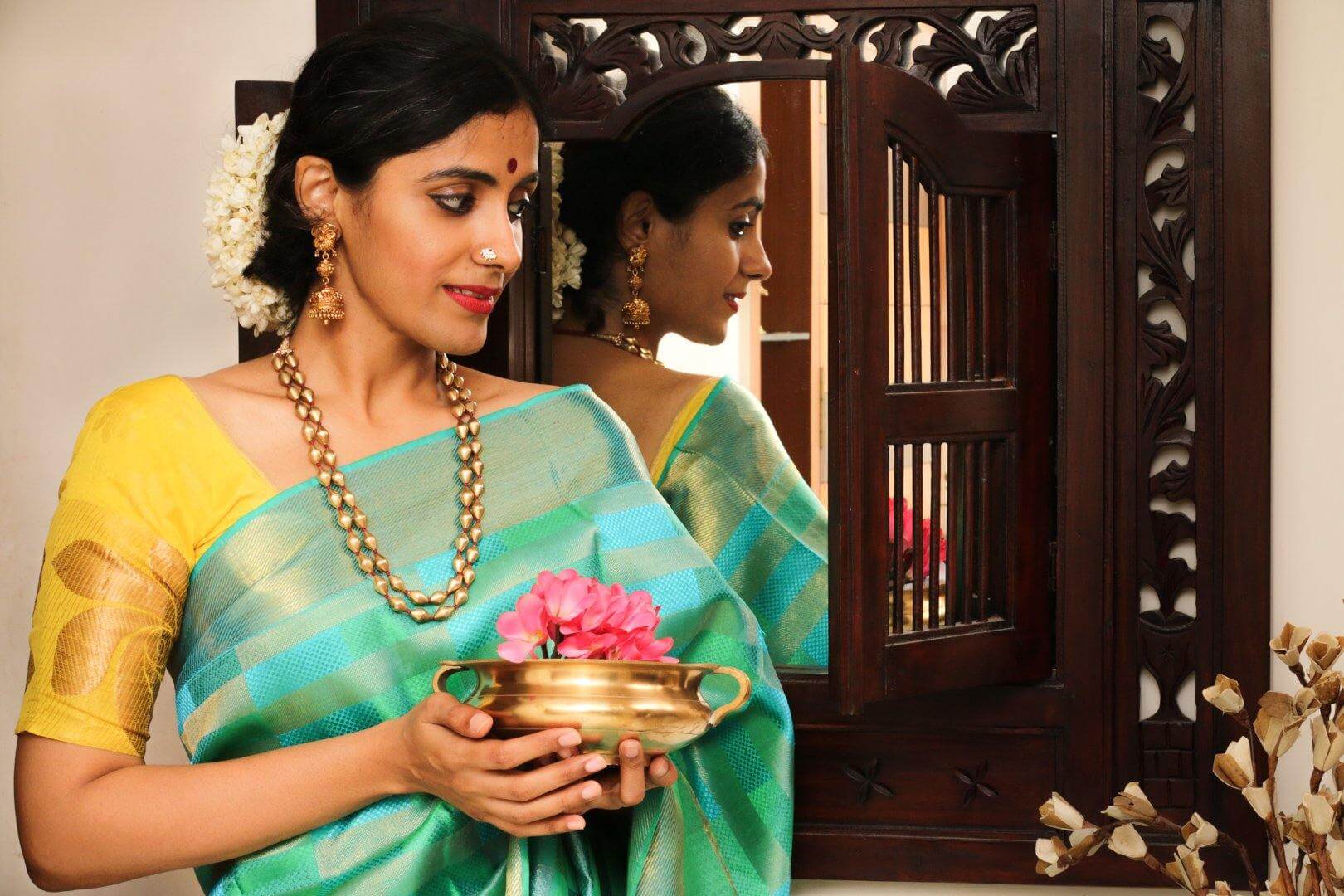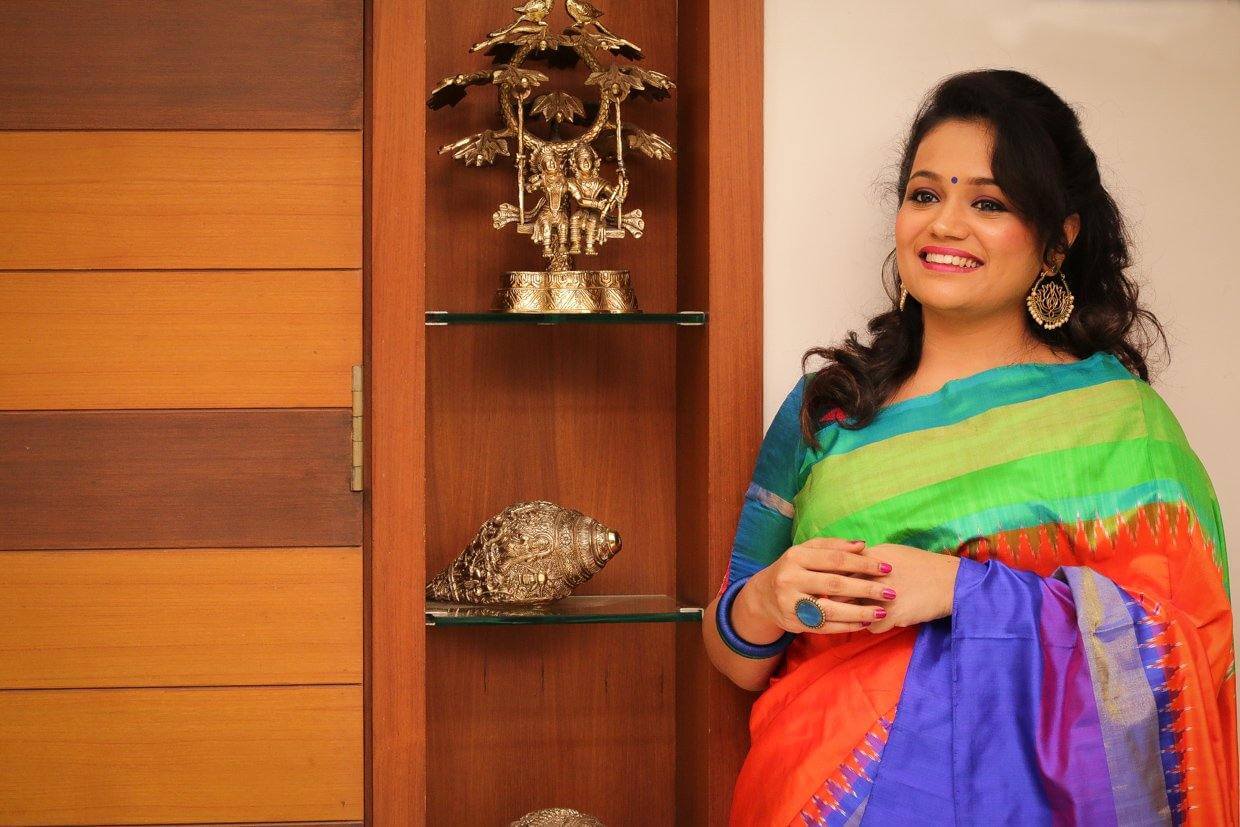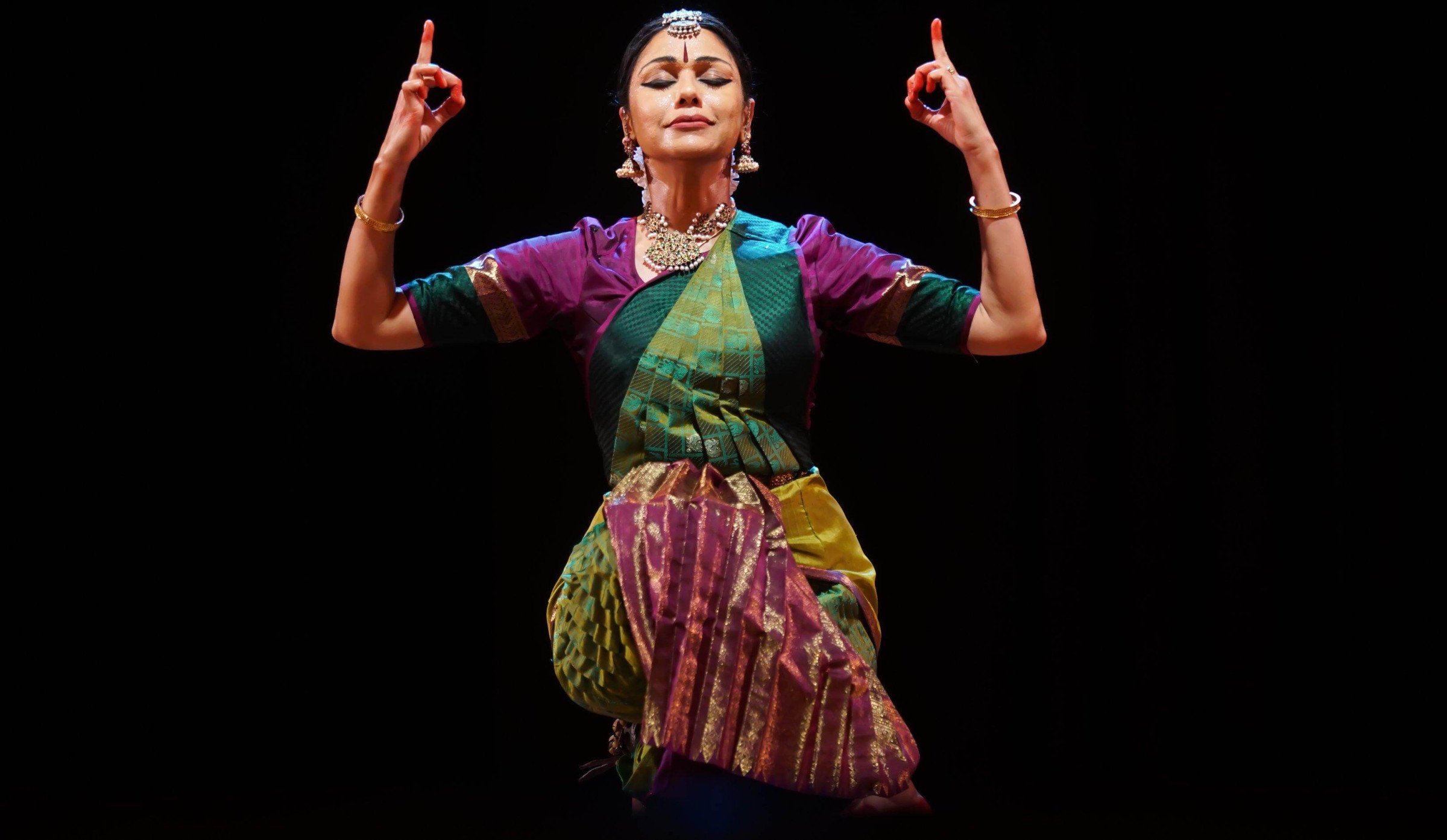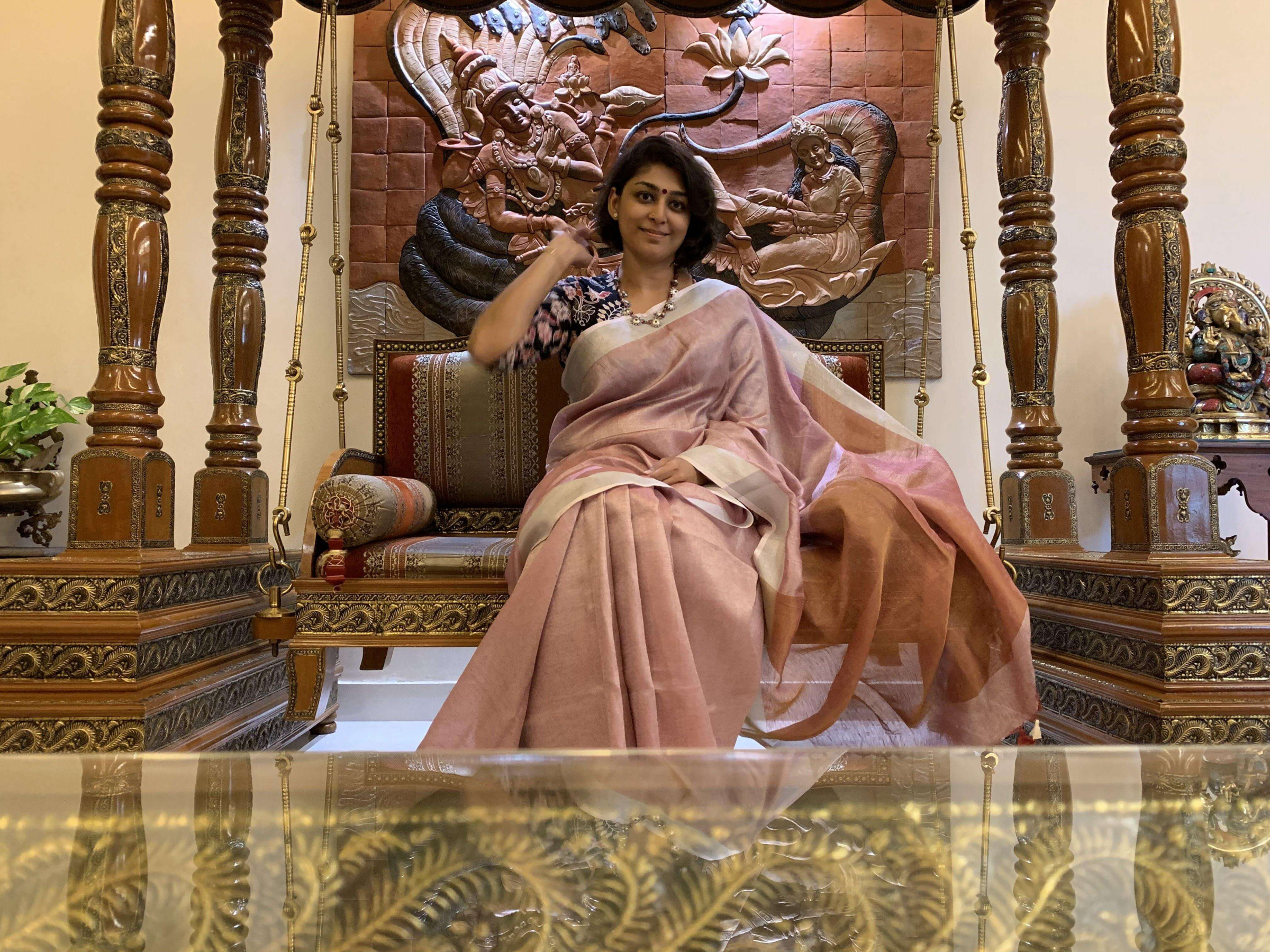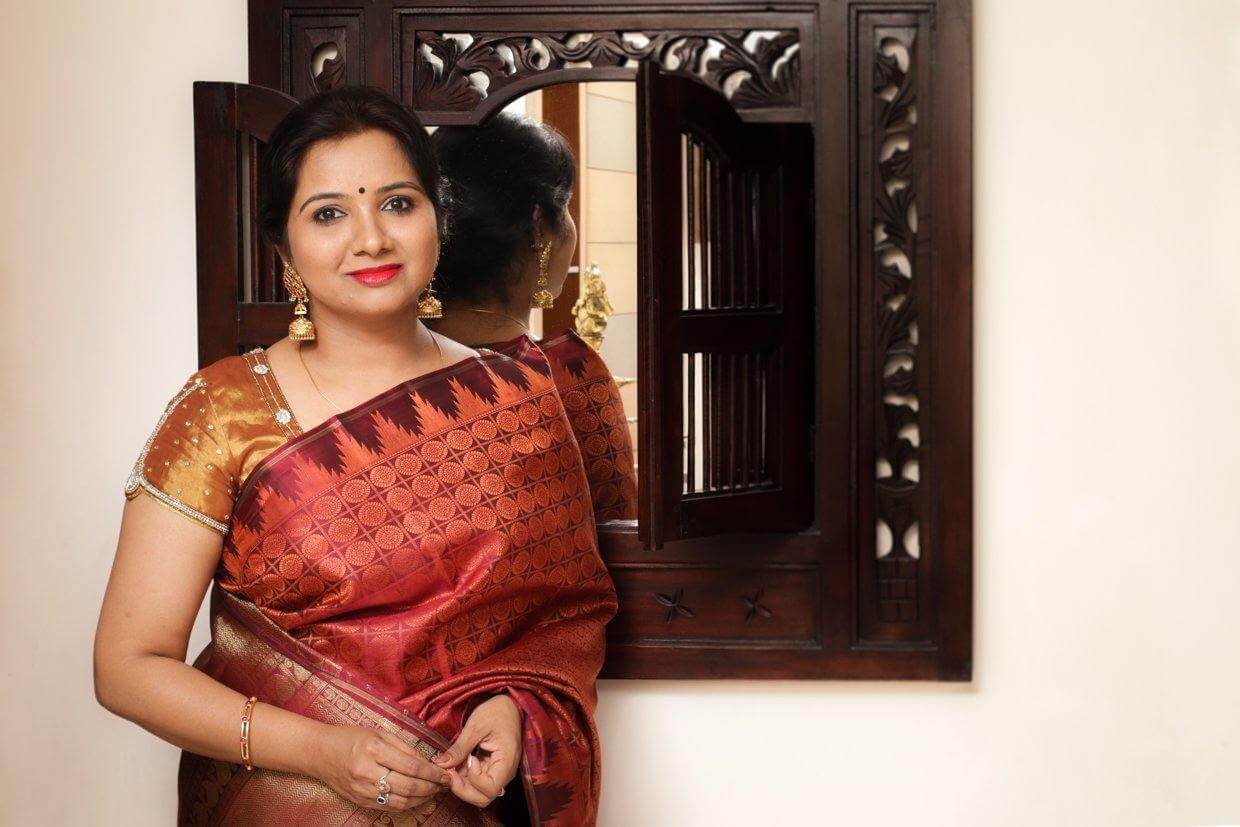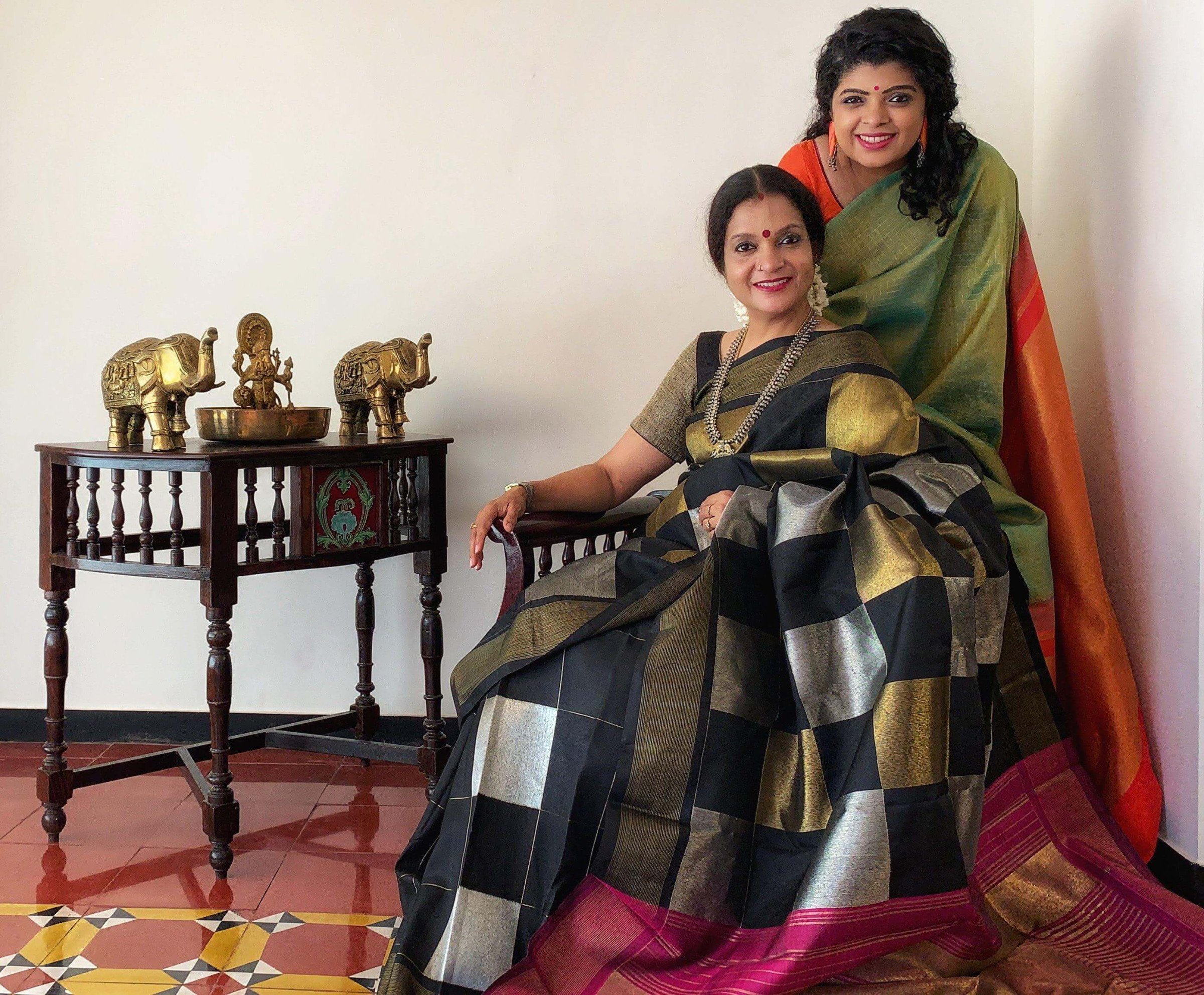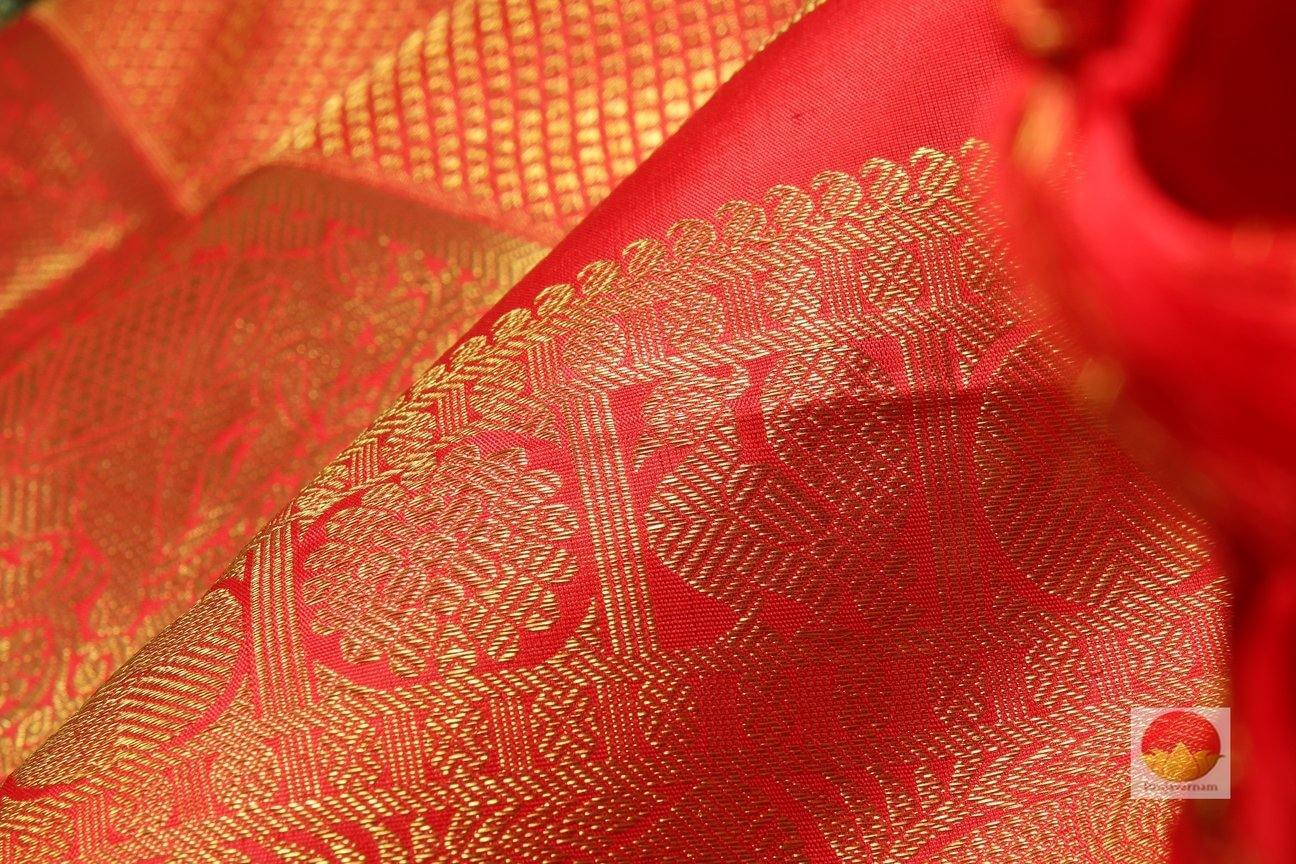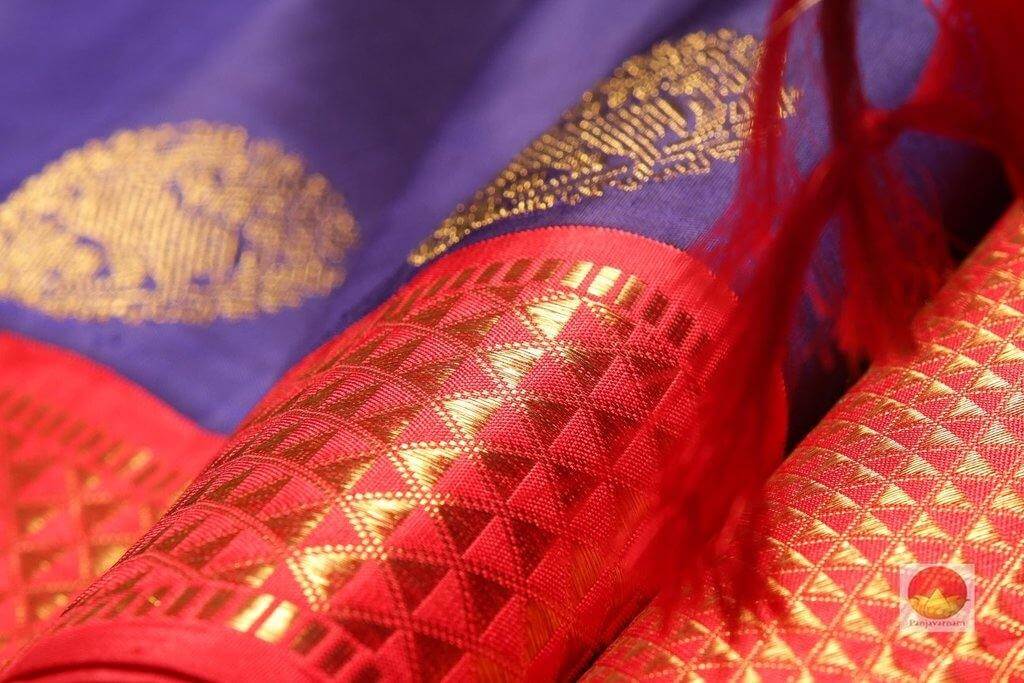To us, a saree is more than just a piece of fabric. Every pleat, every drape tells us a story - your first saree, your first time draping one yourself, stealing sarees from your mother’s/grandmother’s wardrobe… Well, you get the picture. Sarees are a treasure trove of memories, each drape, a tale and every saree, an heirloom you pass on.
At Panjavarnam Silks, we treat every saree as a piece of art to be cherished, an heirloom to be passed on. We want to celebrate women who appreciate the art and heirloom that a saree is. Every woman is different, her experiences unique and has a very inspiring story to tell - just like our collection. The Panjavarnam Penn series is to bring out these stories to celebrate the woman through our sarees.
And who better to begin the series than Aarabhi Veeraraghavan. Aarabhi is a dancer, baker, mom and a saree hoarder (her own words!). A conversation with Aarabhi over a cup of hot steaming chai told us that Aarabhi shared our love for sarees and treat every saree like an heirloom.
We asked her how it all began.
“The reason I am sitting here is not that I am a dancer but that I am a hoarder of sarees. Silk sarees in particular. Actually no, I can’t discriminate. I love sarees of all kinds and wear them very regularly. I started wearing sarees very regularly from when I was 16. It was pavadai dhavanis (Half-Sarees) and then straight on to sarees. And of course being a dancer, I started wearing practice sarees when I was about 13. So I have had a long and very beautiful journey with sarees.”
Aarabhi has a strong background in fabrics and sarees because of her family. Her interest in weaves started off because of her grandmother having every silk saree custom woven. She believes that “Sarees that are memories that cannot be framed”.
To her, saree picking is all about the basics!
“I come from a family where my grandfather used to export fabrics. We constantly had weavers coming in, thatha sitting there and talking to them and coordinating fabrics. While he was doing that, there was my paati who used to painstakingly have every 9-yard saree of hers custom woven. Which also meant that the 6yards that the daughters and daughters-in-law were wearing were also custom woven and all our pavadai chattais too!”
“My earliest memories of festivals and occasions would be paati sitting there picking colours or the weavers coming home and opening out their boxes of sarees and us picking out sarees. It was such a cherished part of my growing up. Even today when I look at my pattu pavadais or sarees picked like that it evokes something much much deeper, memories of times forgotten, simpler times, something that brings a smile to your face. Like your first saree, or your graduation/wedding saree. These aren't memories that can be contained in a frame or a photograph. It's something in the folds of your saree. When you open it out, the smell, the little stains, the smile that these memories evoke. That is what these sarees are not just a piece of fabric you drape.”
“As I grew up I realised that the basics became very important to me. I started discovering this very deep interest I have in knowing more about these weaves and where they come from. This process of handloom I took for granted as children. Its only as I grew older did I understand that it is quite exquisite and not as common as we would have thought given my family background my mom has never worn chiffons, synthetics. She always wore cottons, silks, tussars. The access to knowledge has been there and today I realise it was a definite privilege. It’s wonderful to know where your sarees are from and to know what kind of work went into it. Also realise, every weaver, when they send out their sarees, they are sending out a part of themselves, every design, every colour, every story, their story.”
We asked her what her favourites are...
“I gravitate towards the classics and I love bold colours. I love designs that are timeless, traditional and simple. If it looks like it was a part of my grandmother’s cupboard, then I am definitely wearing it. My Grandmother, my mother and sister have been a huge influence on me as far as choosing a saree is concerned. Also, the fact that I am a dancer sort of sealed the deal for me in choosing designs that are more classical.”
3 Chai cups down we asked her what her most cherished saree was. Also, what a saree meant to her
“My mother’s nichyathartham (Betrothal) saree is beautiful - a dark brown with multi-coloured checks at the border, a tall border. My mother hated that saree and never wore it again, but I fell in love with that saree and asked my mom for it. There is a small stain in that saree and when I asked her what it was, she told me it was the stain of sandalwood paste from during the nichyathartham festivities.
“So well, if u don’t wear it, maybe your daughter will. That’s the thing about sarees. Even if you don't wear them, but maintain them well, someday you love and treasure them, that is a part of your story that you could pass on. As far as I am concerned a hand-woven saree is an heirloom. Sarees are not meant to be worn once and relegated to the back of your cupboard. They are meant to be worn, reworn, loved, passed on to children and grandchildren. And that’s what makes it an heirloom. It's a legacy that has to be shared.”
And we couldn’t agree more. Thanks, Aarabhi for sharing your thoughts and the love for sarees, starting off our Panjavarnam Penn series. We can’t have asked for a better start.
